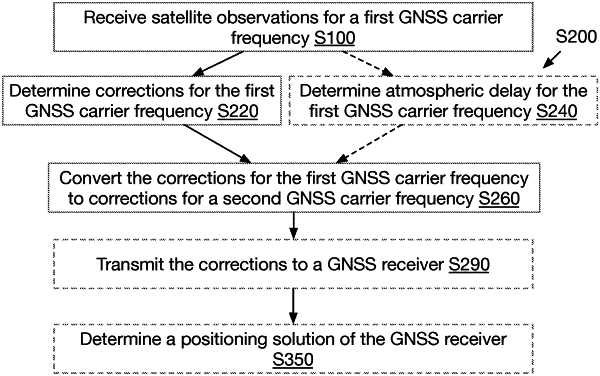| CPC G01S 19/071 (2019.08) [G01S 19/32 (2013.01); G01S 19/44 (2013.01); G01S 19/072 (2019.08)] | 23 Claims |

|
1. A system for correcting global navigation satellite systems (GNSS) signals comprising:
a processor configured to:
receive a first set of GNSS satellite observations from satellite signals tracked by GNSS receivers at a plurality of reference stations, wherein the satellite signals are transmitted with a first signal frequency, wherein the first set of GNSS satellite observations comprise code phase and carrier phase measurements associated with a plurality of satellites;
determine a satellite code bias and a satellite carrier phase bias associated with each satellite of the plurality of satellites based on the first set of GNSS satellite observations;
determine transformed satellite code bias and transformed satellite carrier phase bias by transforming the satellite code bias and the satellite carrier phase bias from the first signal frequency to a second signal frequency that differs from the first signal frequency; wherein a deviation between the transformed satellite carrier phase bias and a measured satellite carrier phase bias at the second signal frequency is at most 0.1 cycles; and
a second processor, collocated with a GNSS receiver of a rover, configured to:
receive a second set of GNSS satellite signals transmitted at the second signal frequency; and
determine a positioning solution of the rover using a set of corrected GNSS satellite signals formed by correcting the second set of GNSS satellite signals using the transformed satellite code bias and the transformed satellite carrier phase bias.
|